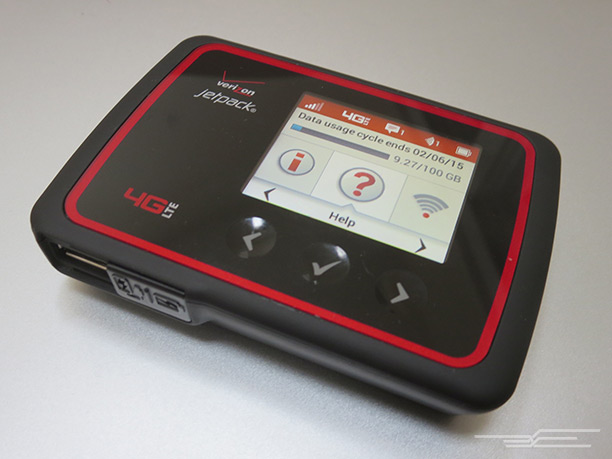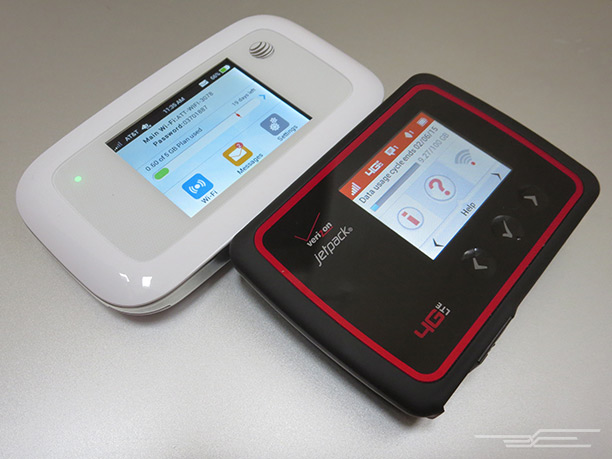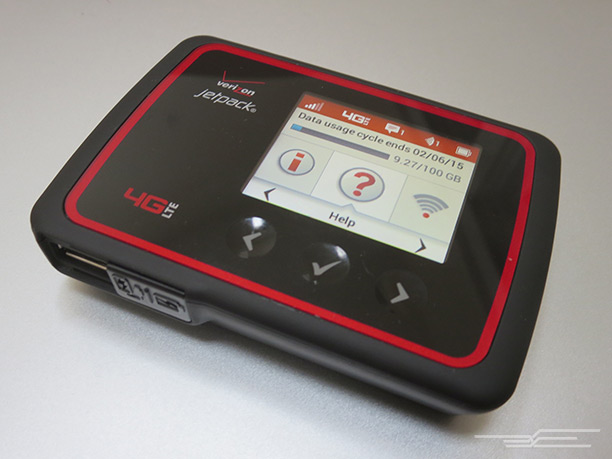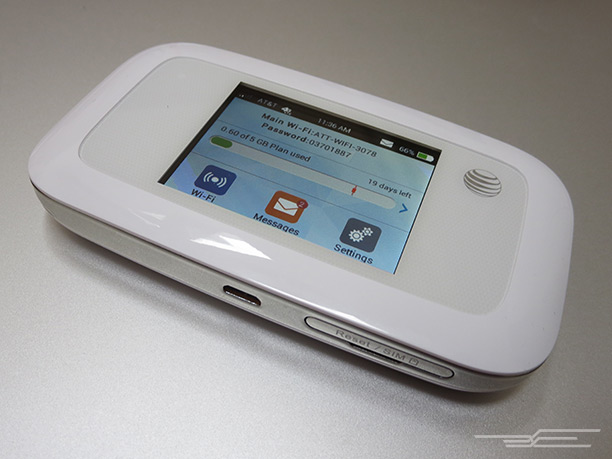

If you regularly travel with devices needing Wi-Fi, get Verizon’s Jetpack MiFi 6620L. Its battery life is among the best we’ve seen in hotspots, it runs on the largest and fastest U.S. LTE network, and its pricing is competitive.
Is my smartphone enough?
Just about every smartphone can act as a hotspot, sharing its connection over Wi-Fi with tablets or laptop. But if you work on the road a lot, a hotspot offers a more reliable data connection than your phone and will run for much longer on a charge than a phone in tethering mode. Think two full days of work versus five hours.
How we picked and tested
We started with networks. Our best-wireless-carrier research and outside reports like PCMag’s “Fastest Mobile Networks” and RootMetrics’ testing all pointed to Verizon.
AT&T, however, isn’t far behind and in parts of the U.S. beats Verizon. It also ended an advertising scheme to track subscribers’ unencrypted Internet use, while Verizon took until January to announce an opt-out.
The LTE networks of T-Mobile and Sprint, even after recent progress, can’t match the big two’s rural coverage—important in a device used often on the road. (For more on this, check out our guide to the best wireless carriers.)

We spent a few months with AT&T’s Velocity and Verizon’s Jetpack 6620L, using loaner devices with a MacBook Air, an iPad mini, two Android phones and one Android tablet around Washington D.C., New York, the Bay Area, Las Vegas and a few spots in between.
Our pick for most people
The Verizon Jetpack 6620L—$50 on a two-year contract, $200 full price—offers long battery life, fast performance, and exceptional coverage.

You’ll need to put the Jetpack on a More Everything plan, with or without a Verizon phone, where pay $20 for the hotspot’s monthly “line access” fee then buy data as needed. A hotspot by itself with 4 GB of data will cost $50 a month. If you already have a phone and 2 GB of data, adding the Jetpack and another 4 GB puts another $50 on your bill; adding the hotspot and 8 GB increases your total by $80.
The Jetpack supports 15 devices over either 2.4 or 5GHz Wi-Fi and allows USB tethering. Devices connected without a hitch and then stayed online.
The 16 hours and 8 minutes of LTE sharing we saw didn’t meet Verizon’s advertised 20-hour battery life but was still great. And the 6620L shares power via a USB port to charge other devices from its 4,000-mAh battery.
One gripe: its soft-touch buttons–there’s no touchscreen–often didn’t register a press. To edit the password and change other, advanced settings, connect to the hotspot and log into a “my.jetpack” site.
Runner up
AT&T’s ZTE Velocity—99 cents on a two-year contract, $149.99 full price—connects 10 devices via 2.4 or 5 GHz Wi-Fi. It can’t do USB tethering, but functions as a network drive if you insert a microSD card.

The Velocity shared an LTE signal for 15 hours and 15 minutes, 5 hours longer than advertised. Devices connected to it reliably, save some hiccups in the noisy environment of CES.

The Velocity’s 2.4-inch touchscreen was easier than the Jetpack’s buttons. But we couldn’t change advanced settings on its “attwifimanager” page, which demanded a separate password nowhere to be found on the device’s screen.
Standalone service consists of a $50 5 GB DataConnect plan. For more data, you’ll have to put the device on a a Mobile Share plan, with or without an AT&T phone, at $20 for the hotspot’s access fee plus data. If you already have a phone on a 3 GB plan, adding the hotspot and 3 GB of data increases your monthly bill by $50; adding the hotspot and 7 GB of data inflates your costs by $80.
AT&T’s new Rollover Data applies data unused last month to this month but probably won’t let you pick a cheaper rate.
Competition
T-Mobile’s network has improved; its hotspots have not. The ZTE HotSpot 915’s 17:09 observed battery life didn’t compensate for crude soft-touch-button controls and lack of 5 GHz Wi-Fi support.
Sprint’s ZTE Live Pro runs Android apps and projects them on a wall. But its network needs work and its pricing ($300 even on a two-year contract) is out of whack.
In pay-as-you-go, avoid anything using the slower WiMax 4G that Sprint is shutting down. Among LTE prepaid hotspots, the upcoming Karma Go’s non-expiring data ($14 for 1 GB, $59 for 5 GB, and up) might satisfy intermittent needs.
Wrapping it up
If you need a mobile hotspot, the Verizon Jetpack 6620L, crummy interface and all, should get you online and keep you there over more of the U.S. than its competitors.
This guide may have been updated. To see the current recommendation, please go to TheWirecutter.com.
This post was done in partnership with The Wirecutter, a list of the best technology to buy. Read the full article above at TheWirecutter.com.
More Must-Reads from TIME
- Why Biden Dropped Out
- Ukraine’s Plan to Survive Trump
- The Rise of a New Kind of Parenting Guru
- The Chaos and Commotion of the RNC in Photos
- Why We All Have a Stake in Twisters’ Success
- 8 Eating Habits That Actually Improve Your Sleep
- Welcome to the Noah Lyles Olympics
- Get Our Paris Olympics Newsletter in Your Inbox
Contact us at letters@time.com